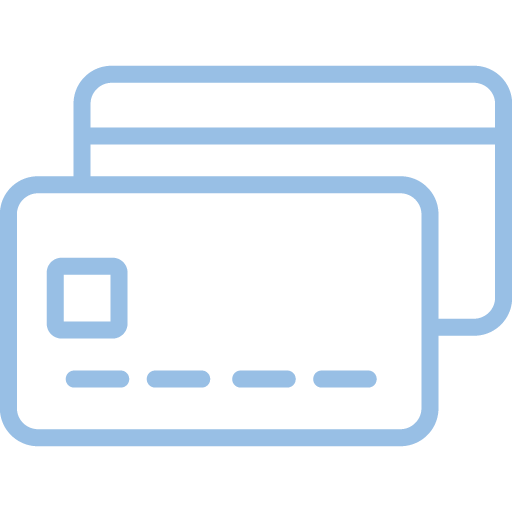Should I Borrow Against My Home Equity With a HELOC?
Your home’s equity is the value of the property that you own outright. This value asset often sits untouched until you sell your home. But with a home equity line of credit (HELOC), you can tap into that cash sooner and borrow against your home equity with a HELOC.
Here’s a look at how HELOCs work and whether you should use one to withdraw your own home equity.
What is Home Equity?
Equity is the portion of your home’s current value that you own, versus what a bank or lender still owns. Home equity is calculated by subtracting your remaining mortgage balance or other liens from the home’s current market value.
Say that you have a home that is currently worth $400,000. You have a remaining mortgage loan balance of $118,000, so your home equity is $282,000.
If you were to sell your home tomorrow, you’d get that equity in the form of cash at closing. What if you don’t plan to sell your home for a while, though? You can access that cash asset now by borrowing against your equity with a HELOC.
How a HELOC Lets You Access Your Home’s Equity
A home equity line of credit (HELOC) is a revolving line of credit that’s tied to the equity in your home. With a HELOC, you may be able to borrow as much as 70% to 90% of your home’s value, minus any outstanding mortgage or lien balances.
A HELOC comes in two stages:
- Draw period — The only stage you can make withdrawals in; the draw period typically lasts for about 10 years.
- Repayment period — No new withdrawals are allowed, and you’ll need to begin repaying the balance on your line of credit. This phase usually lasts another 15 to 20 years.
Like a credit card, you can borrow against an open-ended HELOC up to the total credit limit. Withdrawals are allowed on-demand, so you can pull out cash as needed. As you make payments each month, you’ll free up your credit limit and can borrow again. If you never withdraw funds from a HELOC, you never have anything to repay.
As you borrow, your HELOC balance will be subject to interest charges. These are usually variable during the draw period and fixed during the repayment period, but that can vary from one lender and product to the next. Some lenders also allow you to lock in rates for specific withdrawals during the draw period. This protects you from unexpectedly rising rates.
Should I Borrow Against My Home’s Equity With a HELOC?
Deciding whether to borrow against your home equity with a HELOC is really a personal decision. To help you decide, here are a few questions to ask yourself (and why they matter):
- How much equity do I have? HELOC lenders will only allow you to tap into a portion of your home’s equity. This is often around 80% of your home’s current value. If you only have 10% to 15% equity in your home, for example, you probably won’t qualify for a HELOC. If you own your home outright, though, a HELOC may give you access to more money than other debt products would.
- When do I need the money? Unlike a personal loan or credit card, it can take weeks to complete the process of opening a HELOC. That’s because HELOCs require underwriting and (often) a new home appraisal. If you need funds fast, this product may not be right for you.
- Will I be able to afford the monthly payments? If you default on a credit card or personal loan, you’ll impact your credit score. If you default on a secured debt like a HELOC, though, you put your primary home at risk. Be sure that you’ll be able to make those payments every month before borrowing money against your home equity.
- When do I plan to sell my home? When you sell your home, any proceeds will first go toward paying off your first- and second-position lienholders, such as your mortgage lender and a HELOC lender. Any HELOC on that property will also be closed at that time; if you recently opened the line of credit, you may be subject to early termination fees and penalties.
Alternatives to a HELOC
Not sure if a HELOC is right for you? Here are some alternatives to consider.
Home equity loan
Both HELOCs and home equity loans allow you to tap into your home’s available equity. The difference is that a home equity loan gives you all of the cash upfront and in one lump sum, without the added cost of annual fees. You may be able to lock in a fixed rate on a home equity loan, too, giving you predictable monthly payments for a set loan term.
Personal loan
If you’d rather not use your home as collateral to secure a debt, a personal loan may be the answer. With a personal loan, you’ll get a lump sum loan to use as you see fit, sometimes as quickly as the same day. Personal loan terms may be shorter than HELOCs and interest rates can be higher, so be sure to weigh the costs of each before you decide.
Cash-out refinance
With a cash-out refinance, you are replacing your current home mortgage loan with a brand-new loan. The difference is that this loan is issued for a higher amount, allowing you to tap into a portion of your available equity and take “cash out” of your property. Your cash-out refi may have a different interest rate, repayment term, and monthly payment amount than your current mortgage loan, so take that into consideration.
Split the equity
Recently, companies like Splitero have offered a unique way to access your home’s equity now without the need to repay that debt right away. With Splitero, you are able to get up to $500,000 of your home’s equity in cash now, in exchange for an investment in your property’s future appreciation. There are no monthly payments to worry about and no minimum credit score requirement, either.
At the end of a 30-year term (or when you either sell or refinance your home), you’ll buy back that investment from Splitero, which includes a portion of your home’s new equity. Depending on when you sell, refinance, or opt to buy back the investment, this could be a more affordable option than a HELOC, especially if you want to avoid the added cost of monthly payments.












